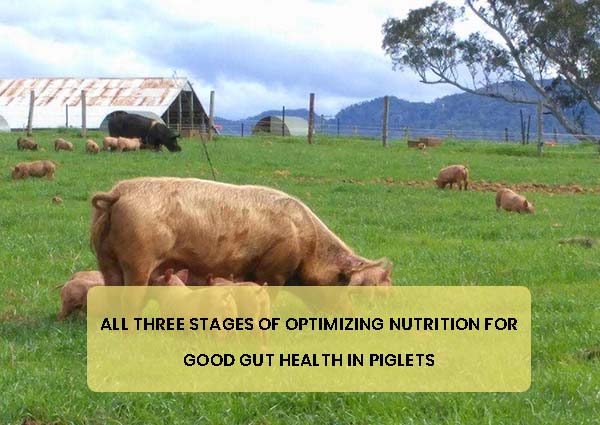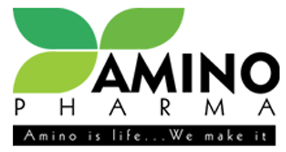All Three Stages Of Optimizing Nutrition For Good Gut Health In Piglets
All Three Stages Of Optimizing Nutrition For Good Gut Health In Piglets
Newborn piglet care is actually quite a challenge on every farm. In the early stages of their lives, these young animals are more vulnerable to health issues that might never affect older, more developed pigs. These challenges can come from all different angles, as disease-causing organisms (like viruses, bacteria and protozoa) are present in each and every part of the farm environment. From the sow to farm personnel, equipment, bedding and feed materials, there’s no get away these threats. Even with the suitable biosecurity measures in place, as piglets grow, they encounter other health-impacting sources. Changes within the diet, for instance, can cause digestive disorders, manifested as diarrhea and failure to thrive and grow. Due to the exposure to and consumption of external, potentially disease-bearing entities, like water, feed and bedding, maintaining proper immunity is crucial. Optimizing gut structures and microbial populations is significant for young animals, because it establishes the basis for their ongoing health and development. Piglets have very specific requirements to establish good gut health and functions and to limit disease development. Providing the best gut health in young piglets may be achieved through various feeding interventions. Here are three crucial stages of developing good gut health in piglets to assist put you on the correct path.

Optimize colostrum from the sow
While in the womb, pigs actually benefit from the fully developed immune system of the sow. However, once born, piglets don’t take any of these immunities together with them, essentially starting from scratch. To help encourage good gut health, the producer’s task is to make sure that the newborn piglets have a good supply of immunoglobulins. These act as the very first line of defense for young piglets, helping them to build their immune system to repel the challenges they face in their environment. The best source of Igs or immunoglobulins is the colostrum supplied by the piglet’s mother, making it an important initiative in optimizing gut health in piglets. After the initial colostrum intake, piglet immunity status tends to diminish, making them more susceptible to disease, which commonly manifests as: Diarrhea Dehydration
Poor milk consumption
In addition, the switch from a milk-based diet to a grain-based diet at weaning implies that their gut structures and microbial populations ought to adapt quickly. This really difficult period is actually know as the “weaning gap” in terms of health as well as immunity and occurs somewhere between 14–21 days of age. In order to make sure that piglets still get the support they need and have a strong base to assist them through the diet transition, the expression of Igs within the sow’s colostrum needs to be optimized. This can actually be achieved by including prebiotics as well as mannan-rich fractions (MRF) in sow gestation diets. Moreover several feeding trials have shown that doing so increases the levels of all Igs in the colostrum and in the blood of the subsequent piglets that receive it.
Promote good gut health directly
Moreover, using them to optimize the mother’s colostrum, prebiotics and probiotics can be administered orally to piglets, thus promoting the development of the correct bacterial balances within the gut, and further establishing one of the best basis for future disease prevention, and also maximizing health as well as growth. Long-established research which has been studying MRF has shown that it also binds to the projections on the surface of disease-causing microbes, and also preventing them from attaching to the gut wall, which they have to do to reproduce, leading to harmless removal in feces. In addition, this binding activity interacts with the immune system within the gut, promoting faster responses to any disease threat. Several different trials have shown that this activity of promoting better gut health increases feed intake, digestion as well as growth and also improves feed conversion.
Use high-quality creep feeds
When piglets reach the age to start weaning, creep feeding is introduced to further prepare their digestive systems for the change in diet. This is another opportunity for the producer to bolster the young animal’s gut health by formulating provender with the best-quality raw materials, processed to maximise digestion and supplemented with proven feed ingredients. These can include: Nucleotides in order to facilitate good gut tissue development Enzymes for maximum digestion Chelated minerals to make sure the best uptake and establish tissue mineral reserves during times of stress These sorts of diets will ease the difficult period during weaning and will actually not compromise the gut environment, keeping disease at bay. Nucleotides are actually the building blocks of DNA and are really essential for the development of young animals. They have been shown to quite significantly increase the growth of gut tissues and are very vital for preventing and repairing damage to the gut wall. A more stronger gut structure is quite important in order to withstand the change from milk to grain-based feeds at weaning, when the erosion of essential and necessary structures for nutrient absorption can actually occur. To support piglet development, Amino Pharma offers a range of products, for both the sow and their young, that help to optimize piglet nutrition and support gut health. As they begin life, baby pigs are extremely vulnerable. Any change in their environment potentially exposes them to an entire new group of pathogens, which may limit their performance. Furthermore, as they mature over the weaning period, they’re typically moved into new environments and exposed to other equipment, animals as well as people. Making sure that the best gut health is established as early as possible is actually the key to limiting disease, increasing health and welfare and maximizing growth.
